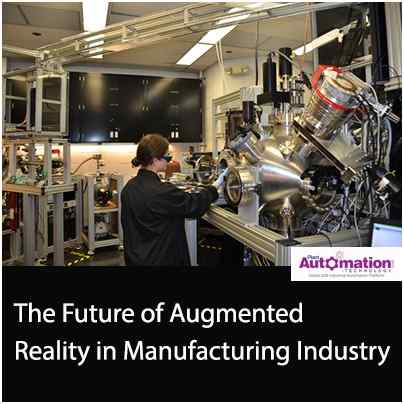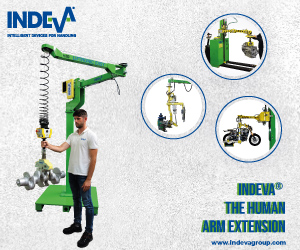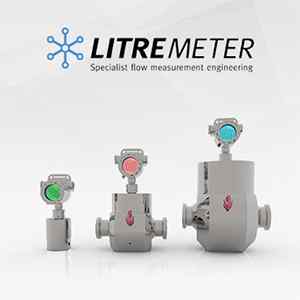Articles
The Future of Augmented Reality in Manufacturing Industry

Augmented reality is the indirect view of a physical environment whose elements are augmented with inputs such as video, sound, or graphics. Owing to the increasing penetration of technology across applications, the hardware sub-segment is expected to hold a major share of the augmented reality market. Augmented reality is responsible for changing the world of healthcare and education with its various applications. By taking benefit of augmented reality, the brand or the company can attract new audiences and also retain its existing customers. Augmented reality aims to generate efficient operations by cutting down production time, rapidly identifying the problems and keeping all the services and processes going. With many potential benefits, augmented reality in manufacturing is a very new concept. The growing adoption of e-commerce and retail sectors across the world and increasing demand in healthcare and rising penetration of technological advancements are the major driving factors that are concentrated with augmented reality. Besides, the major restraining factors that negatively affect the augmented reality market are the high implementation cost and issues such as slow processing and less storage. Also, the increasing awareness regarding tracking customer transactions, recording sales, and calculating bills are boosting the growth of the market.
Let’s have a closer look at some of the ways in which augmented reality can make the manufacturing industry the best it has ever been in years.
A) Assembly
The modern manufacturing engages putting hundreds or thousands of components putting together in a defined sequence as quickly as possible. Whether you are manufacturing smartphones or jet engines, every product requires a new set of assembly instructions. Moreover, the work instructions are traditionally made available as printed or displayed PDFs. These are often very hard to work through and time-consuming to review. It’s difficult to ensure that they are kept up to date, as they are static documents. The instructions are taken and are glanceable in the respective field of view at all times, hands-free and voice-controlled. Hence, along with the associated technical drawings, these work instructions are broken down and also the video from the last person who did the procedure and put all that onto the AR glasses. This means that you can keep your hands on your task and you don’t require walking over to a workstation to check something. Although the idea of projecting assembly information on a heads-up display may be fairly new, assisting with complex assembly is already a tried-and-tested augmented reality application. Augmented reality allows information from work instructions to be displayed in real-time in the operator’s field of view. This removed the need to consult documents or other display devices.
B) Maintenance
Augmented reality can be used to support the maintenance of manufacturing equipment, besides helping with the assembly of manufactured products. For instance, Mitsubishi Electric using augmented reality has been developing maintenance-support technology based on a 3D model that enables users to confirm the order of inspection on an augmented reality display and then enter inspection results with their voice. The most useful application of augmented reality is maintenance in a manufacturing environment. With some applications beyond manufacturing, including inspections of water-treatment plants and building electrical systems, the augmented reality system can be used for a variety of maintenance work. Apart from more than just error detection, being able to see a machine’s status simply by glancing it through an augmented reality display could be incredibly powerful. Augmented reality can allow maintenance groups to rectify equipment that requires servicing, as well as any potential problems. This removes the guesswork, reduces the risk of breakdowns, and allows for faster and more effective servicing.
C) Expert Support
Another productive manufacturing application for augmented reality is expert support. This application also related to maintenance. When a lot of field service is done, the manufacturer of a machine also needs to provide service for it, and that involves traveling to a site where the machine is, You may have a variety of inspections and several technicians for every distributed manufacturing operations, but you may not have enough experts for when things certainly don’t go as per your plan. In such cases, you generally need to have your experts travel to the worksite. But, by providing a “see what I see” kind of telepresence, the expert can see through the eyes of a technician who’s doing the maintenance. They can also interpret the field of view of the technician, so they can point out specific features of interest in what the technician is seeing. That allows experts to provide support and perform inspections from anywhere. This suggests that the much-lamented skills in manufacturing could have a technological solution in the form of augmented reality. The companies could use augmented reality technology to supplement their employee’s existing knowledge with engineering expertise delivered via telepresence, rather than training every machinist or technician. This also opens up new possibilities for training. You can provide training information right on top of the actual parts and assemblies. So, you can start mixing the execution with training, which eventually makes the equipment easier to learn and use.
D) Quality Assurance
The products can be visually compared and inspected with the information provided by the supplier. Any differing features are highlighted, and defective products can be discarded immediately. The product features to be inspected and the equipment needed for the inspection can be visually displayed in the operator’s field of view. The results are displayed in real-time and can also be recorded in the cloud for future use and analysis. Quality assurance provides many applications for augmented reality. Few manufacturers have already started exploring the possibilities provided by augmented reality for quality assurance.
E) Product Development
The traditional development of products is a resource-intensive and a lengthy process. Taking a product from concept through development requires constant communications between several parties and includes various revisions of the initial concept. All this takes place before ever reaching mainstream production and manufacturing. Various divisions may be involved, and the process usually requires several instances of back-and-forth communication to discuss and resolve design changes. The cooperation and collaboration between parties are improved with augmented reality. A senior staff can look over the development of products in real-time and offer valuable input, eliminating the back-and-forth intrinsic to traditional processes. Therefore, streamlining collaboration between the parties involved augmented reality reduces the tedious nature of this process.
F) Automation
One might naturally wonder whether augmented reality and automation compete with each other, given manufacturing’s apparent trend towards increasing automation. As per experts, augmented reality is competing with automation, but in a good way. Augmented reality enables you to leverage context awareness through the Internet of Things to collect information about the environment and then feed that to the worker. All these technologies that are impending around artificial intelligence are going to augment the capabilities of the worker and that indeed is very powerful. It’s called “augmented intelligence”. The simple idea of it is you can take someone of a certain skill level and you can elevate the skill level of that worker by augmenting them with artificial intelligence through augmented reality and the Internet of Things. As more jobs get automated, more workers will be pushed up the skill-chain, which will make them more competitive in the market. So, augmented reality and automation in the near-term may compete with one another, but there will eventually be cooperation between automated machines and augmented human workers.
Undoubtedly, augmented reality will revolutionize manufacturing and companies should give it a serious thought. However, businesses need to remember that it still requires selective equipment upgrades, careful obsolescence management to explore the diverse applications of the technology and to reap the full benefits of augmented reality.





